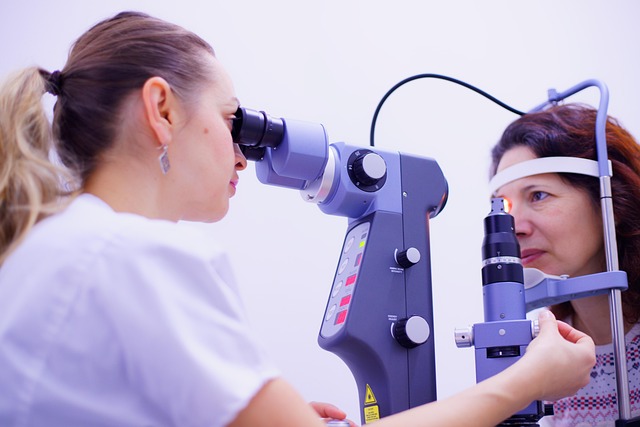Optical Adjustments and Medical Options for Restoring Clarity
This article outlines practical optical and medical approaches to address blurred vision, explaining how assessment, imaging, corrective lenses, and targeted medical care work together to restore clarity. It highlights diagnostic steps, common causes, and rehabilitation strategies to support long-term visual function.

Blurred vision can arise from a wide range of optical and medical causes, from simple refractive errors to inflammation or retinal changes. Restoring useful clarity typically combines careful assessment, targeted optical adjustments such as lenses or eyewear changes, and medical interventions when underlying disease is present. This article describes the assessment process and the options commonly used to reduce glare, improve refraction, and support visual rehabilitation using evidence-based approaches.
This article is for informational purposes only and should not be considered medical advice. Please consult a qualified healthcare professional for personalized guidance and treatment.
How is vision assessed for blurred sight?
A systematic assessment begins with a detailed history and structured screening to identify the onset, pattern, and associated symptoms of blurring. Standard tests include visual acuity charts, contrast sensitivity, and measurements of refraction to quantify focusing errors. Clinicians often evaluate binocular function and check for signs of ocular surface disease or eyelid problems that can affect optics. Assessment also considers systemic symptoms and medication history because systemic conditions can influence ocular health and the diagnosis.
What causes glare and optical distortion?
Glare and distorted vision frequently result from irregularities in the ocular optics: corneal surface irregularity, cataract scattering in the lens, or poorly fitting eyewear that creates unwanted reflections. Optical aberrations can be measured with wavefront testing and slit-lamp examination. Management may involve surface treatments for dry eye, updating spectacle coatings to reduce reflections, surgically addressing lens opacities, or fitting specialized lenses that limit scatter and improve contrast in high-glare settings.
How do imaging and screening support diagnosis?
Imaging tools provide objective data to guide treatment decisions. Optical coherence tomography, retinal photography, and corneal topography reveal structural causes of blurring such as macular pathology, retinal edema, or corneal irregularities. Screening protocols help stratify risk and capture progressive conditions early. Combined with clinical examination, imaging improves diagnostic accuracy and helps determine whether optical correction, medical therapy, or surgical referral is the most appropriate next step.
When is refraction and lenses prescribed?
Refraction testing determines whether blurred vision is primarily due to a focusing error and whether corrective lenses will provide meaningful improvement. Eyewear prescriptions may include single-vision, bifocal, or progressive lenses depending on patient needs, and specialized tints or anti-reflective coatings can mitigate glare. Contact lenses or rigid gas-permeable lenses may be chosen for certain corneal irregularities. Regular monitoring of prescription changes helps ensure optics remain optimal as ocular conditions evolve.
What medical monitoring addresses inflammation?
Inflammation in or around the eye can cause transient or persistent blurred vision and requires targeted medical monitoring. Anterior uveitis, conjunctival inflammation, and postoperative inflammation each have distinct signs detected through slit-lamp exams and imaging when necessary. Treatment may include topical or systemic anti-inflammatory agents, and follow-up monitoring assesses response and potential side effects. Close coordination between eyecare and other healthcare providers supports accurate diagnosis and safe management of inflammatory contributors.
What rehabilitation and follow-up options exist?
Vision rehabilitation supports functional outcomes when full anatomical recovery is limited or when adaptation is necessary. Rehabilitation strategies include low-vision devices, contrast-enhancing lenses, tinted eyewear to reduce glare, visual training exercises, and occupational adjustments for screen use and lighting. Regular monitoring ensures interventions adapt to changes in vision and that lenses or aids are refitted as needed. Multidisciplinary care—incorporating optometrists, ophthalmologists, and vision therapists—can improve long-term visual performance and quality of life.
Clinical decisions about blurred vision typically combine objective testing, imaging, and patient-centered considerations to determine whether optical adjustments or medical/surgical treatments are indicated. Early and accurate screening and diagnosis help direct timely intervention, while ongoing monitoring and rehabilitation sustain functional vision. When underlying inflammation or structural disease is suspected, medical management and specialist referral complement optical correction to restore clarity.






